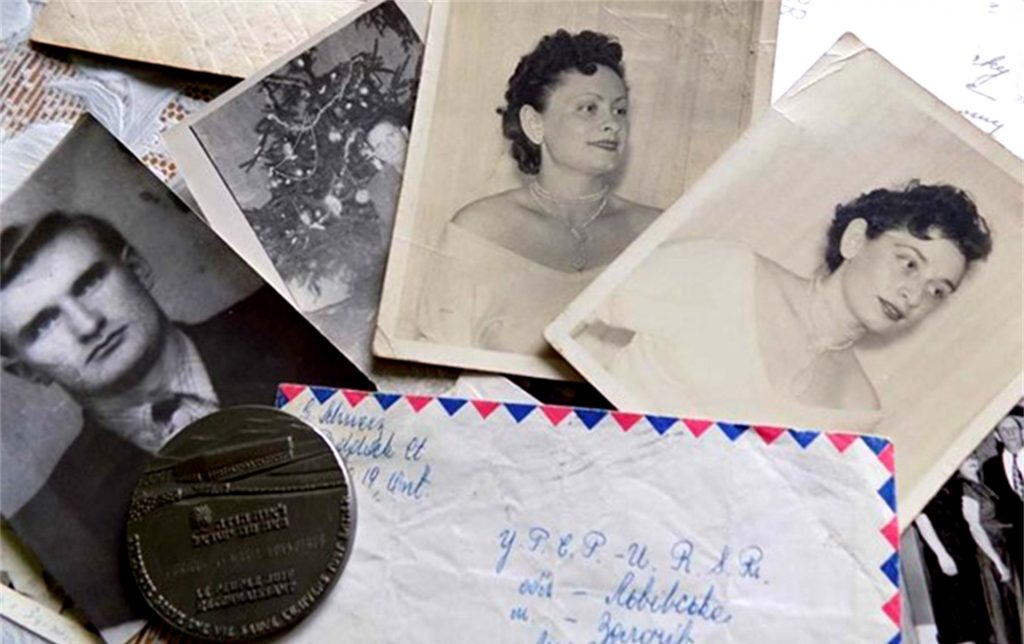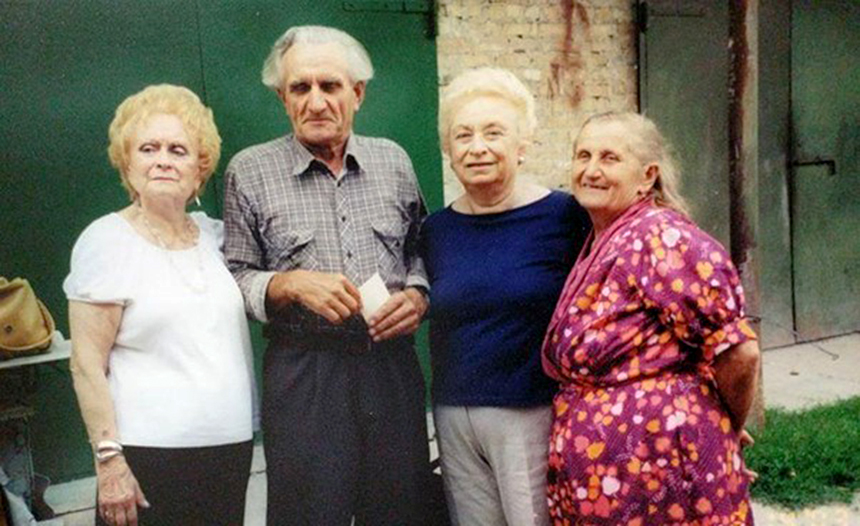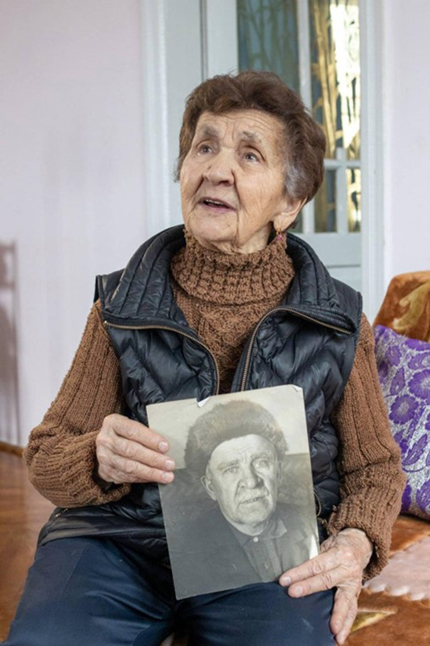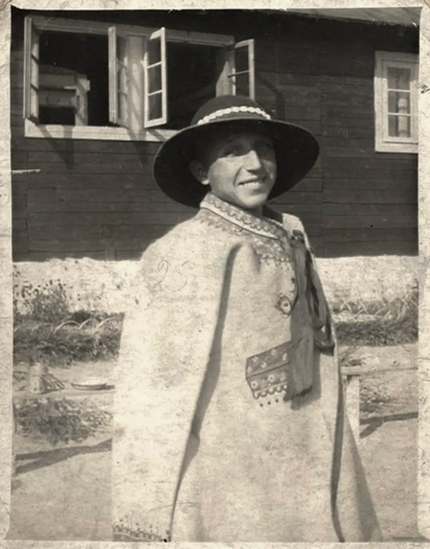Righteous Among the Nations from western Ukraine: those who overcame evil

We continue our series of articles dedicated to the Ukrainian Righteous Among the Nations living in the cities affected by Russian aggression. Today, western Ukraine has become a place of refuge for several million people displaced from other regions. However, relatively safe cities like Lviv and Ivano-Frankivsk are also targets for the enemy.
At the beginning of the full-scale war, the Ivano-Frankivsk military airport was destroyed by shelling, and rockets damaged the aircraft repair and armor plants in Lviv. Another rocket hit a residential area in the village of Velika Vilshanytsia, killing five people, and ten Lviv residents were killed when Russian missiles hit their buildings on 6 July 2023.
Almost all the families of the Righteous Among the Nations from the western region decided to stay in Ukraine despite the military threat. Below is an account of the deeds of several such families and their lives in Ukraine during the ongoing war.
Shoah in western Ukraine
The Shoah (Catastrophe in translation from Hebrew; another name for the Holocaust) took the lives of hundreds of thousands of Jews on the territory of western Ukraine. Before that, they lived side-by-side with Poles, Ukrainians, Hungarians, and others in this region for centuries. On the eve of the German occupation, the number of Jews in the Ukrainian part of Galicia increased by almost 12 percent due to the influx of refugees from Central Europe.
In 1941, the Soviet occupation of western Ukraine was replaced by German occupation. The Germans brought with them the division of the population into "Aryans" and "non-Aryans." Historian Zhanna Kovba writes in Humanity in the Abyss of Hell:
Starting from the winter of 1941-1942, the local population, especially in urban areas, faced the problem of mere physical survival. Hunger and cold plagued both "Aryans" and "non-Aryans." [...]
The Jewish population was virtually doomed to extinction as, on top of everything else, strict restrictions were imposed on its presence in the markets. Jews could not buy food from Ukrainians and Poles because peasants were not allowed to sell potatoes by themselves, starting from November. Urban citizens who had their own kitchen gardens needed a "special permit" to bring in potatoes. The usual trade with and through the Jews was disrupted. [...]
Since the Jews were essentially removed from trade (and their numbers were still significant in the spring of 1942), the "non-Aryan" population had to use the black market to survive. The Jews were blamed for the existence of this market and portrayed as malicious hucksters and speculators. [...]
Shootings were carried out in a systematic and organized fashion throughout the territory of Galicia. At the same time, massive propaganda and organizational measures were used to involve the local population, primarily Ukrainians, in anti-Jewish protests. One cause for such protests in the first days of the occupation was the shooting of prisoners in NKVD prisons in late June as the Red Army retreated.
Anatoly Podolsky, director of the Ukrainian Center for Holocaust Studies, told UJE that "the Holocaust in western Ukraine was part of the total persecution of Ukrainian Jews throughout all Ukrainian lands during the Nazi occupation of Ukraine in 1941-1944. At the same time, it was part of the history of the Holocaust in all of Europe. Jewish communities under Nazi occupation in the territories of eastern Galicia, Transcarpathia, and northern Bukovina suffered in the same way as their compatriots — Ukrainian Jews in the territories of central, southern, and eastern Ukraine. The difference was that most of the Jews in western Ukraine died in ghettos or were deported to death camps on the territory of Poland (Belzec and Auschwitz) and camps in Transnistria."
Historian Vitaliy Nakhmanovych points out the distinct features of the Shoah in different regions of Ukraine: "Transcarpathia was in Hungary. There was no Shoah there at all until the spring of 1944, and then, after the German occupation of Hungary, almost all Jews were deported to Auschwitz. Bukovina was in Romania, and the Jews were deported from there to ghettos in Transnistria. Galicia was part of the Generalgouvernement, and the Jews were deported from there to Belzec. Volyn was in the Reichskommissariat Ukraine, and some of the Jews were shot on the spot there, while others were also deported to Belzec."
Several thousand Jews from the town of Zolochiv died in the Belzec concentration camp, and our first story is about this Ukrainian town.
Zolochiv
Jews lived in Zolochiv for centuries. This is the hometown of Rabbi Yechiel Michel (also known as the Maggid of Zloczow). He was a tzaddik, a miracle worker known throughout the Jewish world, and the author of a hymn ("nigun of Rabbi Michel of Zlotschov") sung in Hasidic communities worldwide.
Naftali Herz Imber, the author of Israel's national anthem, Hatikvah (lit. 'The Hope'), and Roald Hoffman, winner of the Nobel Prize in chemistry, were also born in Zolochiv.
Hoffman miraculously escaped death in the Holocaust. A little boy at the time, he was hidden by the village teacher Mykola Diuk. He and his wife Maria hid the Rosen family and little Roald in the town of Univ. The Yad Vashem Holocaust Memorial Complex recognized the Diuk family as Righteous Among the Nations.
In the Word of the Righteous documentary, Ivan Hryhorovych Vovkotrub tells the story of the rescue of Zolochiv Jews. He is the son of Hryhorii and Maria Vovkotrub, simple peasants who saved many Jews during the Shoah and were recognized as the Righteous Among the Nations. Their story is featured in the sixth episode of the Word of the Righteous, which talks about the Lviv region:
When the pogrom began in Zolochiv, Jewish families began to flee to the Vovkotrubs' farm: the Baums, Picks, Kanners, Kremnitzers, and Shvertzs. All of them found shelter and protection for three years there. In 1993, Yad Vashem recognized Hryhorii and Maria Vovkotrub as Righteous Among the Nations. In 2019, with the participation of the Word of the Righteous project, the Jewish Council of Ukraine awarded the Righteous of Ukraine title to Ivan Hryhorovych.

The story did not end there. In 2020, Stephanie Fox from New York wrote a letter to me as the producer of The Word of the Righteous: "My father was saved by a man whose last name was Vovkotrub. I see that you have a film about the Vovkotrubs. Could they be the same people?" For years, she was looking for information about her father's rescuer on the Internet. In 2019, we translated the relevant Wikipedia pages into English, and Stephanie found what she had been looking for.
Indeed, Stephanie turned out to be the daughter of David Pick rescued by Hryhorii and Maria. Through Stephanie, we became friends with the children of the Kanners, who were also saved by the Vovkotrubs. During the COVID-19 pandemic, when life was tough due to the lockdown, the Kanners and Picks supported their rescuers.
Ivano-Frankivsk region
According to the Jewish Confederation of Ukraine, there are 1,009 known Righteous Among the Nations in Lviv Oblast, 653 in Ternopil Oblast, 60 in Volyn Oblast, 19 in Transcarpathia, and 246 in Ivano-Frankivsk Oblast.
Several years ago, I was fortunate to meet Kateryna Sheremeta (Ilnytska), a Righteous Among the Nations from the Ivano-Frankivsk region. Acting together with her father Petro Ilnytsky and her brothers, she saved the lives of 16 Jews.
Abraham Grünshlag, a Jewish boy from Ivano-Frankivsk who survived the Shoah, talks about the rescue of Jews in the Ivano-Frankivsk region in an interview for Yad Vashem:

"My father was looking for a place to hide. With the concentration camp, […] he knew that I would not be able to survive the concentration camp. He was looking for somewhere to hide. There was a Jewish family called Kessler that lived in the village called Rostochky. In 1942, they [the Germans] were organizing labor camps, and the Kesslers did not want to go either to the labor camp or to the ghetto. So, they ran away […] to the forest near the village, […] hoping that local residents would help them with provisions," says Abraham Grünschlag.

They built a bunker deep in the forest and paid Petro Ilnytsky for food. When they began to run out of money in 1943, they asked Petro to find another Jewish family that could cover the cost of provisions for two families in exchange for a place in the bunker. Then Petro met Abraham Grünschlag's father, who was hiding his family in Bolekhiv. They agreed to move to a safer place in the forest.
"Petro Ilnytsky was a very religious man. Most of the people in the village were very poor and could not provide food for nothing. Ilnytsky definitely deserved the money he was given," says Grünschlag.
There were several hiding places in the forest. At some point, the villagers found one of the bunkers with 18 Jews. The Jews gave the peasants money and asked them to bring food. However, five of the Jews moved to the bunker where the Grünschlags and Kesslers lived. Within 48 hours, the villagers returned to the first bunker with armed men who shot everyone.
Kateryna Sheremetа's family now lives near Ivano-Frankivsk.
Kyrylo Kindrat is another Righteous Among the Nations from Ivano-Frankivsk Oblast. After the war, he moved to Rivne, where he did a tremendous amount of work searching for the families of the Righteous Among the Nations in the region. Kindrat himself is recognized as Righteous Among the Nations for saving Professor Schlezinger.
"Professor Isaak Schlezinger was a Jewish scholar known in academic circles in Poland. He knew more than ten languages and translated the Qumran Caves Scrolls. When he was brought to me, I made two hiding places for him, one in the stable and one in the cellar," Kindrat recalls in an interview. The professor lived with Kindrat throughout the war, teaching him English to thank his rescuer. Both remained friends throughout their lives.
The deeds of the Ilnytsky family and Kindrat are featured in the tenth episode of the Word of the Righteous series.
In 2018-2021, the Word of the Righteous project also recorded several more stories about people from western Ukraine who rescued Jews and were recognized by Yad Vashem.
Kateryna Kleban from Rava-Ruska:
The Popel family from Boryslav:
The Didukh family from the village of Triitsia, featured in the Lviv film of the series:
We give our films as gifts to the Ukrainian Center for Holocaust Studies, the Territory of Terror Museum, etc. We are thankful to everyone whose contribution has helped ensure that the world will always remember the noble deeds of the Ukrainian Righteous Among the Nations.
Marharyta Ormotsadze
Marharyta Ormotsadze is a co-founder/producer of the Word of the Righteous project, which tells about the valor of Ukrainians who saved Jews throughout Ukraine during the Holocaust.



















